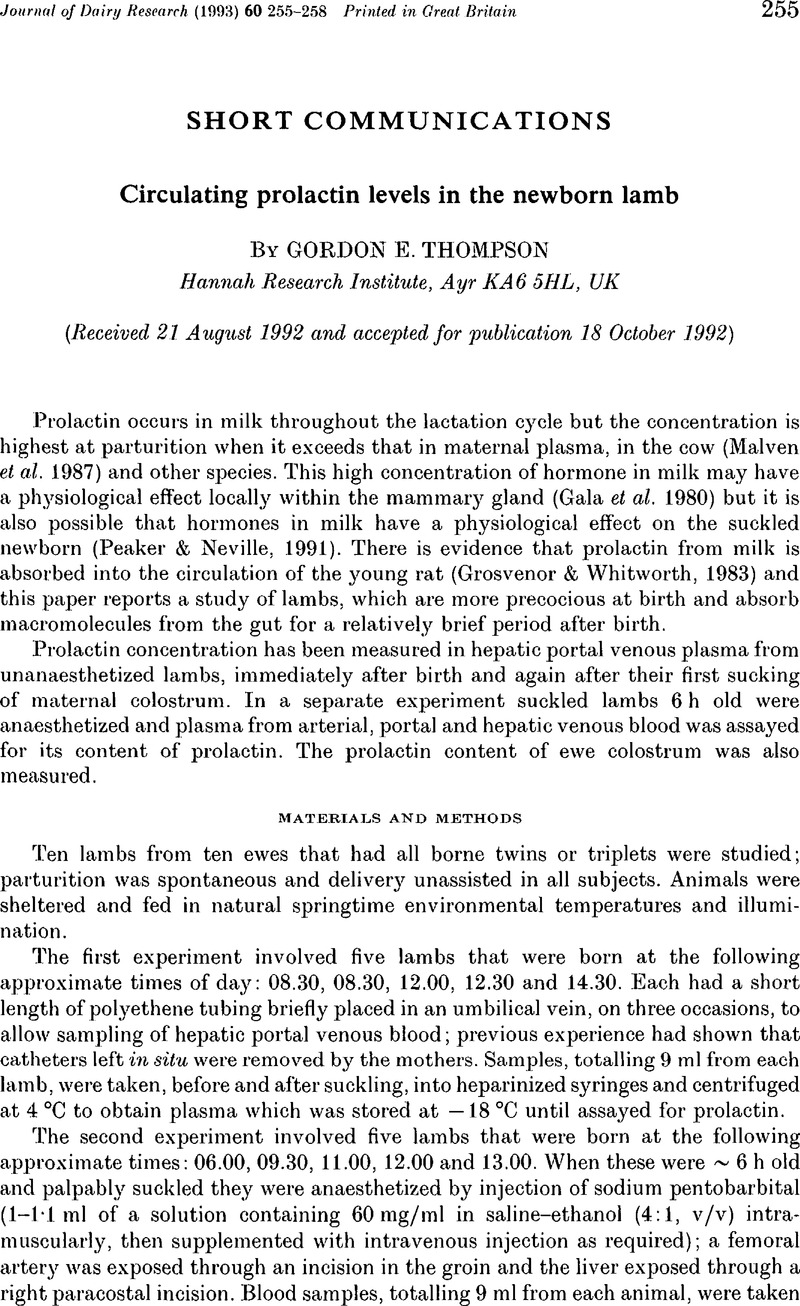No CrossRef data available.
Article contents
Circulating prolactin levels in the newborn lamb
Published online by Cambridge University Press: 01 June 2009
Abstract
An abstract is not available for this content so a preview has been provided. Please use the Get access link above for information on how to access this content.

- Type
- Short Communications
- Information
- Copyright
- Copyright © Proprietors of Journal of Dairy Research 1993
References
REFERENCES
Flint, D. J., Sinnett-Smith, P. A., Clegg, R. A. & Veknon, R. G. 1979 Role of insulin receptors in the changing metabolism of adipose tissue during pregnancy and lactation in the rat. Biochemical Journal 182 421–427Google Scholar
Gala, R. R., Forsyth, I. A. & Turvey, A. 1980 Milk prolactin is biologically active. Life Sciences 26 987–994Google Scholar
Grosvenor, C. E. & Whitworth, N. S. 1983 Accumulation of prolactin by maternal milk and its tranafer to circulation of neonatal rat—a review. Endocrinologia Experimentais 17 271–282Google Scholar
Katz, M. L. & Bergman, E. N. 1969 A method for simultaneous cannulation of the major splanchnic blood vessels of the sheep. American Journal of Veterinary Research 30 655–661Google Scholar
Mcmillen, I. C., Jenkin, G., Robinson, J. S. & Thorburn, G. D. 1983 Concentrations of prolactin in the plasma of fetal sheep and in amniotic fluid in late gestation and during dexamethasone-induced parturition. Journal of Endocrinology 99 107–114Google Scholar
Malven, P. V., Head, H. H. & Collier, R. J. 1987 Secretion and mammary gland uptake of prolactin in dairy cows during lactogenesis. Journal of Dairy Science 70 2241–2253Google Scholar
Peaker, M. & Neville, M. C. 1991 Hormones in milk: chemical signals to the offspring? Journal of Endocrinology 131 1–3Google Scholar
Snedecor, G. W. & Cochran, W. G. 1956 Statistical Methods, 5th edn.Ames, IA: lowa State University PressGoogle Scholar


